Medieval knights were the most skilled and feared warriors of the Christian world of their time. They were cavalrymen in service of the church and the state and they went through extremely rigorous training to attain the title and position of a knight. They were usually given the title by the head of the state and were considered a lower class of nobility. They were often associated with various codes of chivalry and courtesy and expected to have perfect manners and conduct.
Table of Contents
Who Were Medieval Knights?

Medieval knights were mounted warriors. Now, ‘knight’ is simply a title that is bestowed upon a civilian person as a great honor. But the original knights were soldiers, courtiers, and heroes. Knights were allowed to hold land in exchange for military service. And because it was not originally an inherited position, it meant that even men from the lower classes could get a knighthood.
However, this was extremely rare. Usually, only those belonging to wealthy, noble families became knights. They needed very expensive armor and weaponry. They also needed horses. Knights usually pledged fealty to a lord and were answerable to them. The lords, in turn, trusted the knights to bring them honor in battles and tournaments.
The existence of orders similar to knighthood can be traced back to the Roman period. But it was in the middle ages, particularly the late Medieval era, that the institution really flourished. Most of the songs and stories that we know come from this period.
READ MORE: The Roman Army
Knights and Chivalry
There are many poems and epic tales about the knights of the middle ages. Indeed, King Arthur and his Knights of the Round Table are some of the greatest heroes of Europe. It is difficult to separate fact and fiction when it comes to medieval knights. One term that is often associated with knights in the middle ages is ‘chivalry.’ So what exactly does that mean?
The code of chivalry was extremely important during the medieval era. It did not mean simply being respectful of women, as we think in the present day. Being chivalrous meant being upright and honorable in every aspect of one’s life, being familiar with courtly courtesies and diplomacy, being well-read and familiar with poetry, and being generous to those less fortunate than oneself.
‘Chivalry’ was a moral and ethical code that governed the behavior of all in the middle ages, but especially of the knights. It was further reinforced by all the romantic literature which sang praises for the chivalric knights. It meant that the knights always needed to maintain a good reputation. Some of the traits that were considered ‘knightly’ and ‘chivalrous’ were courage, loyalty, honor, justice, military prowess, good manners, generosity, and protection of the weak. Knights who did not adhere to these principles could have their titles stripped away and their reputations blackened forever.

What Does ‘Knight’ Mean?
The word ‘knight’ is derived from the Old English word ‘cniht’ which means ‘boy’ or ‘servant.’ That, in turn, comes from the German word ‘knecht,’ meaning ‘servant’ or ‘vassal’ or ‘bondsman.’ Over the years, the meaning changed from ‘servant’ or ‘boy’ to ‘someone who served the king or some other superior.’ It was in the 1300s that the verb ‘to knight’ became common. At the same time, the meaning of ‘knighthood’ changed from ‘adolescence’ to the ‘rank of a knight.’
Thus, it is clear from the meaning of the word itself that the main purpose of medieval knights was service to the king, lords, and the realm.
A Brief History of Knighthood
The origins of knights can be traced back to the reign of Charlemagne, the King of the Franks. The end of the Roman Empire and the beginning of feudalism is what really ushered in the middle ages. And knights were an integral part of that. Called ‘miles’ in Latin, the first knights were basically warriors on horseback. There was no formal ceremony. They were cavalrymen who fought with spears and later lances and they rode with the king, making his great conquests and victories possible. They were part of the reason that the Franks overthrew the Roman Empire since the Roman cavalry was not as superior.
As the church became more and more powerful, the complex feudal system emerged. The system was a series of rights and duties between the rulers, lords, peasants, serfs, and freemen. Land was the basis of hierarchy at the time because trade and commerce were limited in Western Europe. Knights swore allegiance to the lords, who in turn swore allegiance to the king. They were highly respected and valued because the post-Roman nations were steeped in warrior culture. Even where there were no wars to be fought, the knights sharpened their skills by competing against each other in elaborate tournaments and jousts.
Knights in the middle ages were supposed to uphold ‘Christian’ values, which is why they could so often be found fighting the Crusades. Some of the first orders of knighthood were religious ones – Knights of the Holy Sepulchre, Knights Hospitaller, Knights Templar, and the Teutonic Knights. At the time of their founding, in the early middle ages, they were monastic orders and were meant to protect pilgrims traveling in the Holy Land. Gradually, they grew to become extremely military organizations.
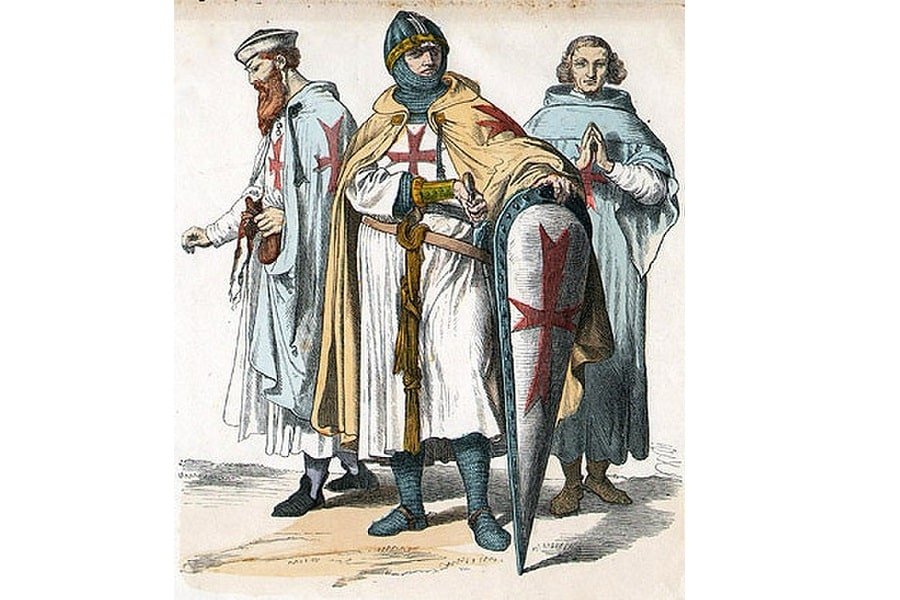
Knights in Medieval Literature
Knights were highly exalted in the literature of the middle ages. Called literary romance, medieval-era literature waxed eloquently on the ideals of knighthood and chivalry. Some of the most popular examples of this kind of literature are The Knight’s Tale by Geoffrey Chaucer, Don Quixote by Miguel de Cervantes, The Song of Roland, The Twelve of England, and The Book of the Courtier by Baldassarre Castiglione.
Even within this genre, Arthurian romances formed a different category altogether. These were the tales of Arthur and his knights. Most well-known among these are Historia Regum Britanniae by Geoffrey of Monmouth, Le Morte d’Arthur by Sir Thomas Mallory, and the English classic, Sir Gawain and the Green Knight.
All of these tales, while strictly fictional in nature, created a high ideal of knighthood to live up to. Military prowess was only one part of the whole, Christian faith and courtly courtesies being equally important. Thus, by the late middle ages, it was clear that knighthood was more of a calling for youths in the nobility. The education, learning, and expenses required would be hard for a commoner from the lower rungs of society to fulfill.
How Did One Become a Knight?
To become a knight in the middle ages, one had to start on the journey from early childhood. A boy became a page at about 7 to 10 years of age. Pages were typically of noble birth or the sons of knights themselves. As a page, a boy would serve a noble lord, learn how to hunt and handle horses, be educated by priests and chaplains, assist older knights in battle, clean the knight’s armor, and take care of the camp.
The next step was squire when the boy turned 14. He would swear on a consecrated sword and become part of a lord’s household. The squire would continue with his combat training but at this point, he was allowed to own weapons instead of simply borrowing them. The squire was required to master several skills, all while wearing armor – riding, shooting, swimming, and diving, learning to use several weapons, participating in tournaments, dancing, and chivalry.
A medieval knight was usually eligible for ‘dubbing’ – the ceremony for assigning knighthood – between the ages of 18 and 21. A dubbing was preceded by a bath and an overnight church vigil. In the morning, the squire was dressed in a white tunic, representing purity, and a scarlet cloak, representing the blood that he was now ready to spill in the name of his sovereign, lord, and church. His sword was blessed by a priest in a religious ceremony and the squire was given the sword by a knight. He was charged with protecting the weak and upholding justice. The squire was tapped on the shoulders by a sword (a ritual known as accolade). The squire, now a knight, was then given a horse, shield, and banner with his coat of arms on it.
In some cases, a squire or common soldier from the middle ages could be given a knighthood for showing great courage or efficiency in their service.
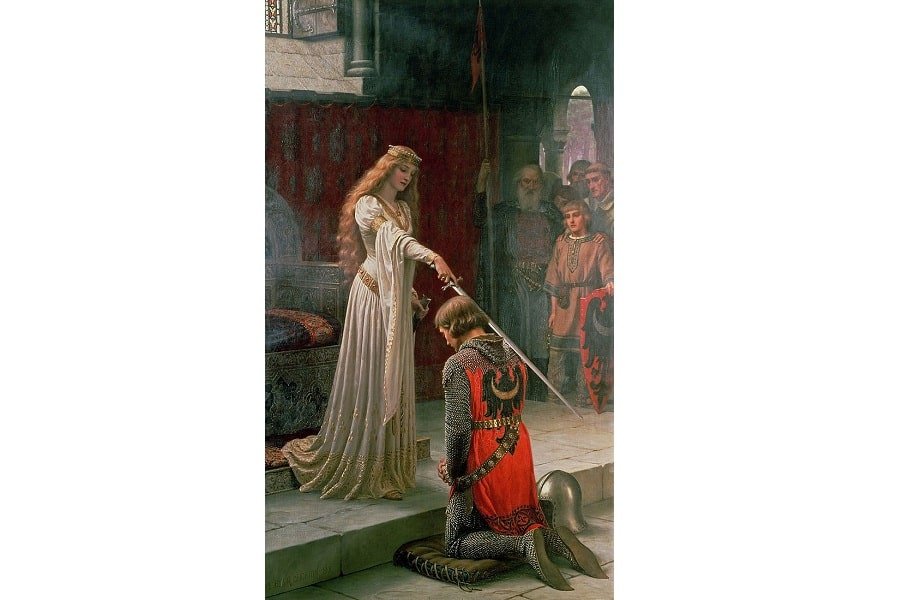
Service to Lords
Medieval knights were usually sworn to the service of different feudal lords. They acted as bodyguards and soldiers for these lords. There were no standing armies in the feudal age. In times of war, the king called for men from the lords who were sworn to him. Knights and common foot soldiers alike were sent to answer the call. In times of peace, knights would take part in tournaments and jousts to showcase their skills. Their loss or defeat reflected not only on their own honor but also the honor of the lords they were sworn to.
Some knights refused to swear allegiance to a lord or a military order. These knights were known as knights-errants. They roamed the land looking for adventures to prove their worth. While they were the subject of various romantic tales, knights-errants did not have as high a standing in medieval society as other knights. This is because they did not play an active role in courtly matters.
Knightly Culture in Medieval Times
The knight of a medieval knight was a busy one. Whether he was sworn to a lord or a military order, whether in times of peace or war, and whether young or old, there were many requirements of a knight in the middle ages.
Weapons and Armor
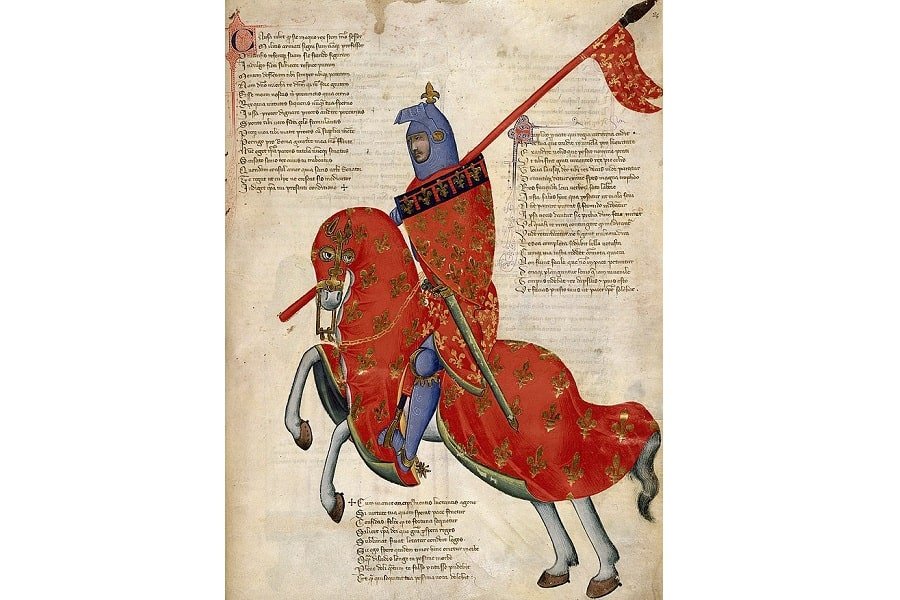
Knights usually had extremely elaborate armor. From the 9th century CE onwards, knights wore chainmail. A full coat of armor comprised a hooded coat, trousers, gloves, and shoes and was quite heavy. Only the face was left uncovered because knights wore helmets. A medieval knight wore a sleeveless surcoat over his armor which had his coat of arms sewn across the chest.
From the 14th century onwards, plate armor became much more common since it provided better protection from arrows and lances. This was even heavier than chainmail but was still typically lighter than what contemporary foot soldiers carried. Helmets or helms were used to protect the head. The first knights wore simple conical helmets with nose guards. But this later evolved into the fully enclosed helmet.
The typical medieval weapons carried by the knights were a long wooden lance and a heavy sword. They also knew how to wield other weapons like battle axes, daggers, maces, bows, and crossbows. However, they did not wield most of these weapons from horseback. A knight had to know how to fight at close quarters in case they were unhorsed.
One very important fact was the protection of the horses. The horses gave the knights most of their advantage. They were like tanks in modern warfare. This meant that the horses too needed armor. A medieval knight’s horse usually wore a mixture of chainmail and plate armor to protect its head, sides, and chest.
Jousts and Tournaments

While military service was definitely required of a knight, no nation was in a constant state of war. In times of peace, knights needed to keep in practice. This is why jousts and tournaments played such an important role as entertainment in the middle ages. Tournaments usually took place in castles and many knights from all over the country would participate. They would show off their banners and armor to the court before the actual games began.
The two most important kinds of the sport were melees and jousts. The former were like mock battles where several competitors took part. The knights had to plan a miniature military campaign to take each other hostage. Hundreds could participate and the last man standing was declared the winner.
Jousts, by contrast, involved two knights riding at each other with a blunted wooden lance in hand. The aim was to break their lance on the other’s body or head or unhorse them altogether. These were a test of their riding skills just as much as it was a test of their battle skills.
There were always rich prizes for the winners and it was an opportunity to show off their skill and chivalry to aristocratic ladies. Those who won or conducted themselves well in these tournaments brought glory to their liege lords.
Military Orders
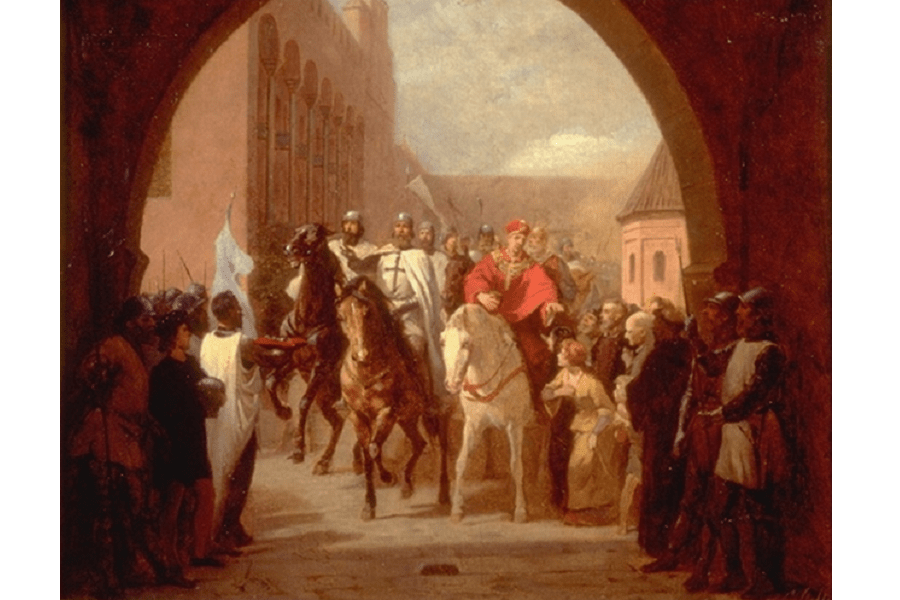
The more devout medieval knight often joined military orders like the Knights Templar or the Teutonic Knights. At first, these organizations were meant to protect pilgrims who journeyed across the Holy Land. That was why the first knights joined up for them, because of their religious convictions. But by the 13th century and the successful conquest of the Holy Land, these military orders became extremely powerful and prestigious.
The idea of the medieval knight upholding Christian values and fighting the Crusades became an easy method of reaching heaven. After all, it was so much easier to wage war and kill people of other faiths than to be a good and moral person. The irony of this is that the idea of knighthood as a whole was quite possibly influenced by Saracenic or Islamic ideas of furusiyya or mounted warriors.
The most well-known of these military orders is probably the Knights Templar, even though they were disbanded after a relatively short period. The Knights Templar wore white surcoats with red crosses and were famous fighters in the Crusades. It is said that these knights refused to retreat in battle and often led the charges.
The Order of the Holy Sepulchre, the first such order to be founded, still exists and has the Pope as its symbolic head. The Teutonic Knights, which were among the last of such orders to be formed, were German knights who broke off from the Knights Hospitaller. The Teutonic Knights committed to a state of war and continued on to conquer Prussia after the Crusades ended.
In some cases, knights even joined military orders in the last days of their life. This ensured that they would be buried in a good spot in their cemeteries or churches. Sir William Marshall, for example, joined the Knights Templar just before his death. He was buried in Temple Church, London, and his effigy can still be found there.
Some Famous Medieval Knights
There have been many knights of much renown across the middle ages. They have formed military orders, fought great battles, attained glory for king and country, and even in some cases rebelled against their sovereigns. The most famous knights were known for their bravery, battle tactics, and chivalry.
Godfrey of Bouillon

Godfrey of Bouillon was a French nobleman and the leader of the First Crusade. Even though he was the first ruler of the Kingdom of Jerusalem, he never called himself a king. This was one of the most important of Godfrey’s ‘chivalric’ gestures. He stated that no man should wear a golden crown in the city where Christ wore his crown of thorns.
He has gone down in history as a knight fighting a military campaign for the good of Christendom. For centuries afterward, poems and stories were being composed about Godfrey. He became known as one of the Nine Worthies: nine men throughout history, both real and fictional, who personified the ideals of chivalry.
In reality, Godfrey was only one of several barons who led the First Crusade. However, he acquitted himself well and was offered the throne. He called himself Advocate of the Holy Sepulchre and set up the Order of the Holy Sepulchre. He ruled for only one year and was succeeded by his brother Baldwin. He is buried in the Church of the Holy Sepulchre in the city of Jerusalem.
William Marshal
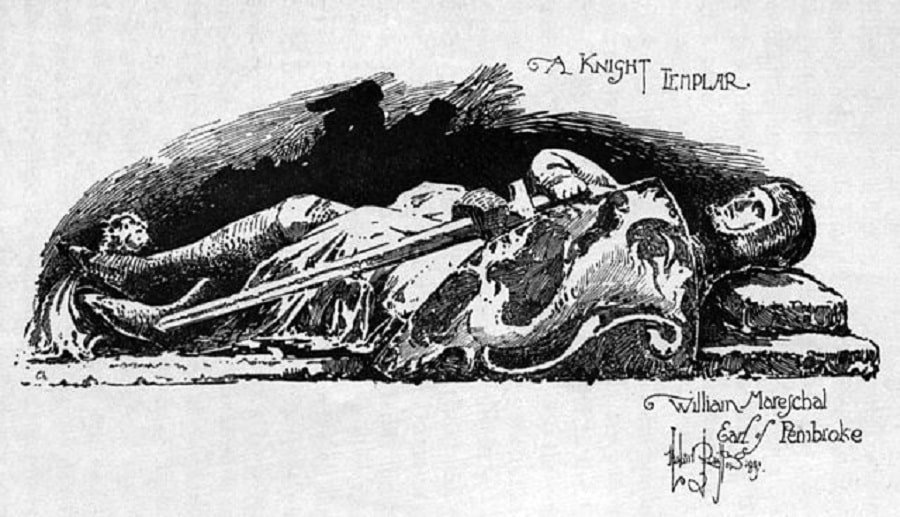
William Marshal was well-known both in England and France during the middle ages. While he was a royal advisor to four English kings (including Richard the Lionheart who was considered a great knight himself), even the French grudgingly admitted that Marshall might be the best knight in the world. In fact, one of the most comprehensive tales of a knight’s life was about William Marshal, in old French verse form – L’histoire de Guillaume le Maréchal.
The rise of William Marshal from a second son who sought out knighthood to a champion at jousts was a meteoric one. It was this that made him advisor and master of arms to the Kings of England. Marshal also traveled to the Holy Land and fought alongside the Knights Templar for two years. He protected the throne while Richard was away on the Crusades and remained at King John’s side when the Barons revolted against him and forced him to issue the Magna Carta.
William Wallace and Robert Bruce
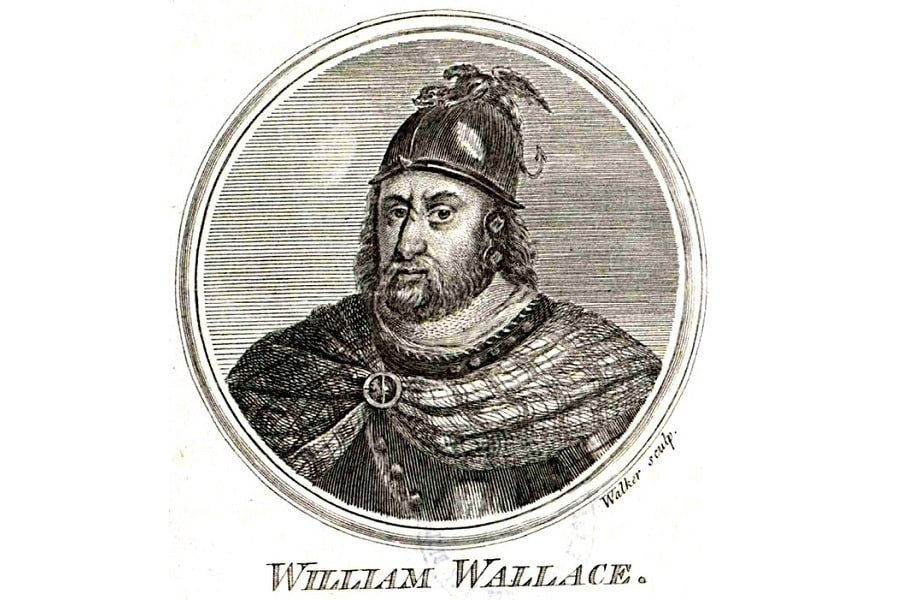
William Wallace and Robert Bruce, who later became King Robert I of Scotland, were both knights. But they were rather unusual knights in the sense that they both went to war against their ‘rightful’ monarch, the King of England.
The British people did not consider either of them a chivalrous knight because they went against all the codes of chivalry. These knights refused to take the battlefield against the English soldiers one on one. Their battle tactics consisted of a variety of traps and guerilla warfare because they were using the Scottish landscape to trap the much more powerful and efficient English army. As such, these men were Scottish heroes but not typically ‘knightly’ figures.
However, it would be important to point out here that both began their careers as knights before they went on to fight in the Scottish Wars for Independence. They were both from noble families and participated in military campaigns on behalf of Edward I, the King of England, before their rebellions.
Jean II le Meingre

By the end of the middle ages (around the 15th century CE), knights and battle tactics that involved heroes on horseback were dying away. They had become very much a spectacle of court, where a knight fighting a joust was a remnant of the past more than an actual hero. One of the memorable figures that emerged during this transitional age was Jean II le Meingre, also known as Boucicaut.
Boucicaut became the Marshall of France, a position of great power. He was knighted at the early age of 16 and fought in various European battles for over two decades. He also fought beside the Teutonic Knights. He set up several chivalric orders, like the White Lady of the Green Shield. This was meant to protect the female relatives of knights who had died during the Crusades or in battle. This earned him much praise from female philosopher Christine de Pizan who was passionate about the rights of women.
Boucicaut was ultimately captured by the English and died in England.
When Did Knights Stop Existing?
As the middle ages moved into the modern era, countries started forming their own standing armies. These professional armies were equipped, trained, and mobilized much more easily and cheaply than knights. By the mid-16th century, firearms had become common and the plate armor of knights was no longer effective against them.
The modern standing armies were mostly made up of foot soldiers. The advantages that the cavalry gave an army had melted away with the arrival of guns. Even as far back as the 14th century, a group of infantrymen armed with pikes and fighting in close formations had proved effective against the cavalry. Thus, it made no sense to keep using knights on horseback in battle.
As the feudal system gradually came to an end, lords and barons no longer had use for knights as retainers. They were simply too expensive. Most landowners made do with young squires and hired mercenaries.
The code of chivalry was considered old-fashioned and unrealistic where modern warfare was concerned. In some cases, knights were absorbed into professional armies. While they were given the respect due to their lineage, they lost the distinctive identity they had enjoyed thus far. Some knightly orders survived. But they were no longer concerned with military matters, although they did hold on to their codes of chivalry. Several of these serve as charitable institutions now.